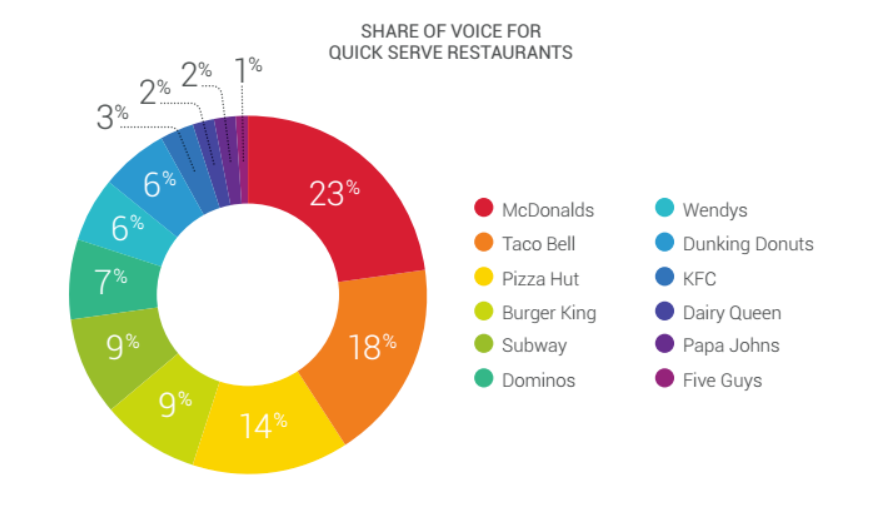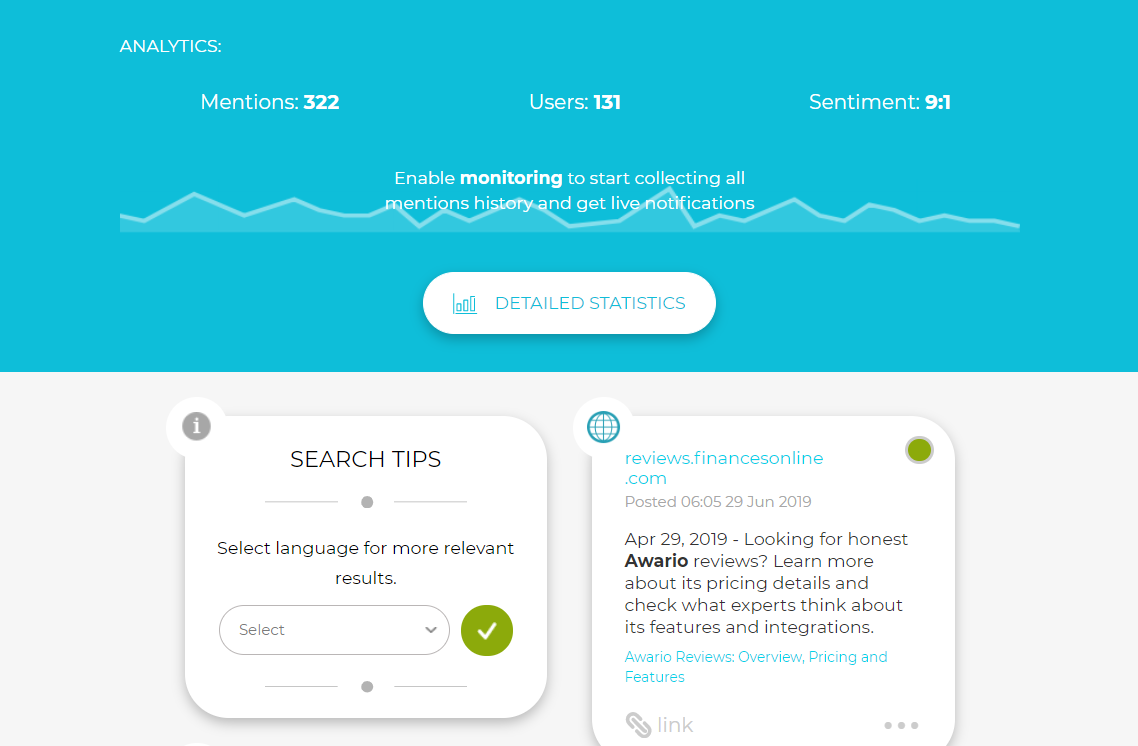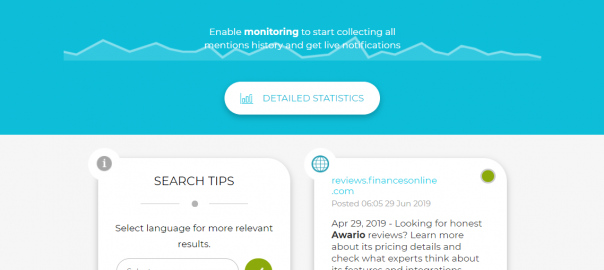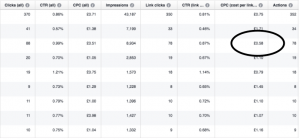— June 13, 2019
Competitive analysis is a part of any marketing strategy. It’s a process of finding out everything about your competitors’ companies, products, marketing strategies, and the results of their marketing strategies. Competitive analysis is necessary to develop or validate your Unique Value Proposition, notice gaps in your industry niche, and decide on how your product and your brand should develop. It’s a crucial, time-consuming, and exciting task that can turn your whole marketing strategy and product development around.
Measuring share of voice is a significant part of competitive analysis. The definition of SOV is quite simple: using a number of metrics, it shows how much weight or percentage you take among other players in your niche. It’s the substitute measure of the market share of each of your competitors – a substitute because determining the actual market shares for each of your competitors is pretty much impossible. So what are these share of voice metrics that are so important to us?
There are multiple aspects of your business you can measure with share of voice. At first, marketers used the term ‘share of voice” to show how big the company’s share of advertising is compared to all of their competitors. Now it’s used to assess online visibility in general and includes organic search, PPC, and social media. All these metrics put together point out the efficiency of your brand’s marketing efforts in comparison to your competitors’ marketing efforts. They show you whether your efforts pay off. They answer questions such as “Is your social media strategy any good?”, “Are you in a PPC rat race with your competitor that doesn’t pay off?”, “How is your SEO strategy doing compared to your competitors?”, and so on.
Today, we’ll focus on the social share of voice – a crucial metric in social media marketing. Here, the share of voice metrics mean “the number of times a brand is mentioned on social networks vs. the number of times each of the competitors’ brands are mentioned on social networks”. Share of voice here shows the awareness around your brand and how engaged your audience is with your brand.
You can go beyond share of voice, look into the social metrics in more detail, and see what the customers actually say about your competitors. For example, these metrics can answer such questions as: “What’s the sentiment behind your mentions? Do they talk a lot about them because they are unhappy?” But first, you’ve got to look at the people who are talking about you online.
Here’re the tools that will help you figure that out. All of them are multifunctional and go way beyond showing the social share of voice. To cover businesses of all sizes, we’ll go through three tools that were developed for different budgets.
1. Awario for small to mid-sized businesses on a budget
Using a social media monitoring tool is the quickest and most hassle-free way to calculate share of voice. Awario is a social media monitoring tool on a budget, although it does have an Enterprise version, too. The tool collects all mentions of your brand on all major social media platforms (Twitter, Facebook, Instagram, YouTube, Reddit), news sites, blogs, forums, and the web. You can set it up so that the tool only searches the sources you’re interested in. For example, to determine the market share more precisely, it’s useful to monitor all sources, especially websites. But if your main competitors are small businesses on Instagram, which isn’t a rare case these days, it might mean that monitoring just Instagram or just social media platforms is enough.
To start monitoring, you’ll have to set up an alert for your brand (don’t forget to add abbreviations and common misspellings as additional keywords) and specify locations, sources, and languages you are interested in. Then, you’ll have to do the same for your two main competitors. The tool will need some time to collect your mentions. The mentions are collected in real time, so the app is never really “done” collecting mentions, but once you feel you’ve got enough for a good statistic, go to the analytics section of the dashboard, click on Alert Comparison, and see the share of voice metrics.

It’s better to check your share of voice regularly as opposed to just one time because this way you’ll see how your metrics increase over time. This way you’ll also notice spikes in your mentions and in the mentions of your competitors. You’ll be able to look more closely and see what had caused the volume of mentions to grow.
After you’ve observed and documented your share of voice, you can use Awario for further analysis: sentiment analysis to determine the good, the bad, and the neutral in your and your competitors’ mentions; topical analysis to see which words are mentioned most often alongside your brand; source analysis to see how you compare on each of the chosen sources, and so on. Measuring sentiment can be especially important – this instantly adds context to your competitor analysis. It’s one thing to know that people talk more about your competitor than about you and a totally another thing to know they are reacting to a serious product malfunction or a deeply offensive marketing campaign.
Topic clouds are another metric to measure with share of voice: in relation to what are brands talked about the most? Finding this out will give you loads of opportunities for growing your share of voice. For example, if loads of mentions for your competitor are associated with their blog, perhaps you need one, too. Or, perhaps, you’ve got to work more on it if you already have one.
Finally, if you see something unusual, for example, a spike in your competitor’s mentions, you can always look what these mentions are saying in real time right from the app.
2. Brandwatch for enterprises and agencies
Like Awario, Brandwatch is a social media monitoring tool. It offers a huge amount of social media analytics in one of its main projects, Brandwatch Analytics. Brandwatch monitors an extensive array of platforms, including niche and rare ones, such as Baidu, Naver, Qzone, and Tumblr. They monitor blogs, forums, news sites, review sites, and video sites. You can also add any page you wish Brandwatch to monitor, and they’ll add it to their list of sources in no time.
The workflow for getting the share of voice metrics in Brandwatch is the same as in other social media monitoring tools. Besides, you can create rules and categories within the platform that allow you to automate the process and monitor developments as they happen.

Naturally, you can also go beyond the share of voice and use Brandwatch Analytics to reveal mentions’ insights, such as sentiment analysis, user demographics, and topical comparison. The tool does “comparative sentiment analysis”. This will show you whether a brand has more mentions, but a lower net sentiment. Uncovering the gender, interests, profession, and location of the authors in the data of your competitors and comparing it to your own will give you opportunities for growing your brand awareness and your share of voice. For example, if loads of mentions for your competitors come from generation Z, perhaps, that’s a demographic that’s been overlooked by you while still being relevant.
Again, monitoring this over time, as opposed to just looking at the metrics once, can provide valuable information for the product development and marketing strategy.
In their manual, Brandwatch also suggests doing a share of voice metrics for your products. For example, you could compare Big Mac, Quarter Pounder, Big Tasty, McSpicy, and McChicken to see how they compare to each other on social media. While not a part of a competitive analysis, this can help you develop your product development and marketing strategy. The products can be compared with social media monitoring tools other than Brandwatch, but you will need Brandwatch if you’ve got a wide range of products.
3. Social Searcher + Google Sheet for the free use
For solopreneurs and businesses who are just starting and can’t afford a social media monitoring tool, there’s a tricky option: a free social media monitoring tool such as Social Searcher and a share of voice formula in an Excel sheet with which you do the share of voice calculations. I’ll explain how to calculate them, but first, let me be clear: a free social media monitoring tool is not really a good substitute. Keep in mind that it won’t cover many sources, it won’t cover many pages from the sources it covers, and, naturally, it won’t do the analytics for you. But sometimes there’s just no budget for every analysis one has to do when starting a business. So here you go.
Social Searcher does search in real time, is very easy to use, and is 100% free, at least for now.

In Social Searcher, search for your own brand, wait for the tool to gather mentions, and look at the top of the results to see the total number of your mentions. Do the same for your competitors: you’ll have to open Social Mention in a new tab to do that as your previous search results won’t be saved. Search for the mentions for as many competitors as you like.
You can also look at the tool’s analytics: they measure metrics such as “Mentions”, “Users”, and “Sentiment”. Popular users are sorted by the popularity of the posts in the search results and active users – by the number of posts.“Sentiment” measures the tone of mentions, as it does in other tools.
Come back to the mentions of you and your competitors that the tool has found and prepare to do some calculations. Write down the total number of mentions for your company and for each of your competitors. Calculate the total number of mentions and then calculate the share of voice for your company by dividing your number of mentions by the total number of mentions and turning the fraction into a percentage.
To make the job easier for you, I’ve made an effort to calculate for SOV formula in this Excel spreadsheet. Simply insert any number instead of the numbers written for your company and the companies of your competitors, and watch the percentages and the graph change.
Conclusion
Measuring your share of voice is important, but, of course, you wouldn’t want to stop at that. The competition for people’s attention is harsh. Experiment with different marketing campaigns and observe how share of voice changes in reaction to them; try yourself in content marketing – people don’t talk about products that much, but they share around useful content and discuss it online, hence raising awareness of your brand; market through influencers – a mention by an influencer with a wide reach sparks up conversations all over the web. Aim for viral, creative, worth-talking-about – and keep measuring the results.
Digital & Social Articles on Business 2 Community
(24)







